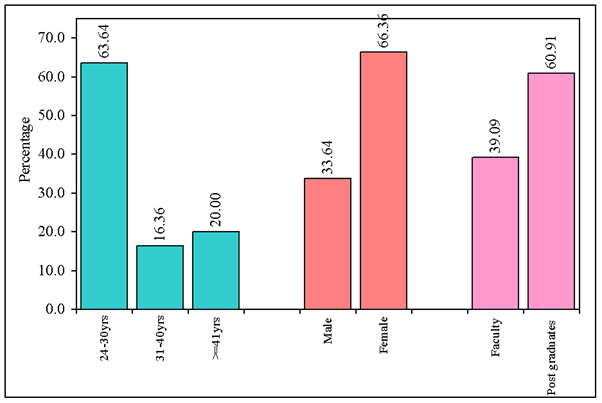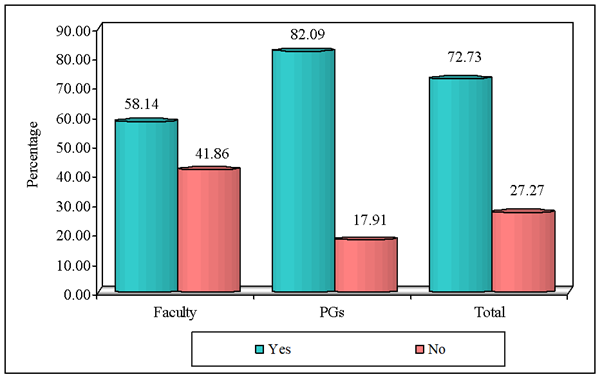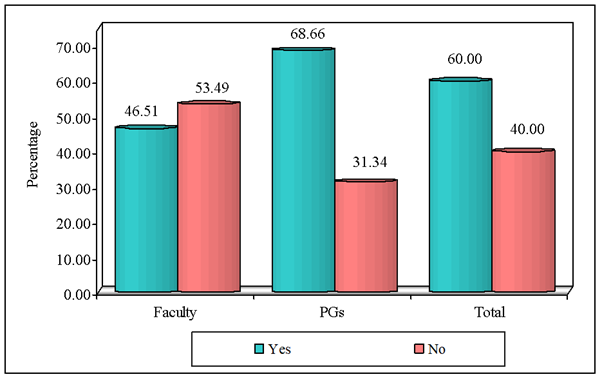Tamballa Pavani1*, KVNR Pratap2, T Madhavi Padma3, V Siva Kalyan4, Velthuru Srujan Kumar5 and Harsha Mudigonda1
13rd Year Postgraduate, Department of Public Health Dentistry, Mamata Dental College and Hospital, Khammam, India
2Professor And Head of The Department, Department of Public Health Dentistry, Mamata Dental College and Hospital, Khammam, India
3Professor, Department of Public Health Dentistry, Mamata Dental College and Hospital, Khammam, India
4Reader, Department of Public Health Dentistry, Mamata Dental College and Hospital, Khammam, India
5Senior Lecturer, Department of Public Health Dentistry, Mamata Dental College and Hospital, Khammam, India
*Corresponding Author: Tamballa Pavani, 3rd Year Postgraduate, Department of Public Health Dentistry, Mamata Dental College and Hospital, Khammam, India.
Received: July 24, 2024; Published: August 17, 2024
Citation: Tamballa Pavani.,et al. “Conglomeration of all the Published Article Titles from Different Journals into their Respective Speciality Association Site – an Opinion-Based Pilot Study on Faculty and Postgraduates in Khammam, Telangana". Acta Scientific Paediatrics 8.9 (2024):21-26.
Background: India is one of the 15th largest research publication producers (as per the Economic times December 18, 2019), and now accounts for 5.31 per cent of the total world publications. Therefore, finding relevant articles from various sites may take a great deal of time. However, conglomeration (or) collecting the titles of all published articles, short surveys and dissertations from various journals and dental specialities into their respective association sites can help future young researchers by reducing search time and quick access to relevant information. The study aims to assess the opinion of/on the conglomeration of all published titles of articles and short surveys from various journals and dissertation title names are one-stop search for further research.
Methodology: A descriptive cross-sectional survey was conducted using a self-administered questionnaire among 44 faculty and 66 postgraduate students from various dental specialities in Mamata dental college, Khammam, Telangana. The study was conducted in august 2022 for 3 days. The results were analysed by descriptive statistics and Chi-square test using SPSS version 14. All tests were set at a 0.05 significance level.
Results: The results of this study indicate that most of the faculty members and students prefer the conglomeration of all the published article titles from different journals into their respective Speciality Association sites as they can be easily accessed.
Conclusion: From the present pilot study, it can be concluded that the faculty and postgraduates both share a similar opinion on/of the conglomeration of published articles to make further research process facile and easier
Keywords:Research Publications; Conglomeration; Association Sites; Research Facilitation; Academic Databases; Access to Information
Research is crucial for advancing knowledge and solving complex problems. It drives innovation, informs decision-making, and contributes to improvements in various fields, ultimately benefiting society as a whole. The exponential growth of academic publications, particularly in fields like dentistry, has led to information overload for researchers [1]. As India is one among the 15 largest publication producers, finding relevant articles may take a great deal of time [2].
To address this issue, the concept of consolidating published titles, surveys, and dissertations from various dental journals and specialities into their respective association sites has emerged. This approach aims to simplify the research process by providing a centralized platform for accessing and searching all relevant literature. By combining data from web databases, journal archives, and institutional repositories, this strategy seeks to provide a more comprehensive view of the research environment [3].
The primary objective of this study is to gather feedback from dental faculty and postgraduate students However, with the collection of all published titles of articles and short surveys from various journals and dissertation title names from various colleges into their respective association sites help the future research by reduction in search time and quick access to relevant information. Hence the conglomeration of all published titles of articles and short surveys from various journals and dissertation title names is one stop search for our research.
A descriptive cross sectional questionnaire-based Pilot study was conducted among faculty and postgraduate students from various dental specialties in a teritiary care teaching hospital, Khammam, Telangana. The study was conducted in August 2022 for 3 days, involving a total of 110 subjects (44 teachers and 66 postgraduates). Data was collected using a 15-item self-assessed, close-ended questionnaire which consists of demographic information, existing literature search practices, challenges faced during literature searches, and opinions on merging article titles and virtual conglomeration. The questionnaire was pre-tested on a group of respondents to ensure quality and accuracy. Data analysis employed descriptive statistics and Chi-square tests to identify significant variations across specialties or demographics. SPSS version 22 was used for all analyses, with p < 0.05 considered the level of significance
The study, which included 110 participants (66.36% female, mean age 32.19), provided important insights into the literature search practices of dental practitioners. The majority of responses were postgraduates (60.91%). 80% indicated frequent use of online resources, however 72.73% struggled to discover relevant materials. Google Scholar (33.64%) and PubMed (57.27%) were the top sources. Accessing paid websites (65.45%) and finding specialised information (60.00%) were the most difficult challenges. The majority of respondents (98.18%) found conglomeration beneficial for shortening search times. Postgraduates spent more time on literature searches than faculty, with no significant gender differences observed.

Figure 1: Demographic profile of respondents

Figure 2: Comparison of faculty and post graduates with What is the average time taken to find articles related to your topic?.

Figure 3: Comparison of faculty and post graduates with How often do you use online resources to find research papers?

Figure 4: Comparison of faculty and post graduates with Finding relevant articles takes a great deal of time.

Figure 5: Comparison of faculty and post graduates with Do you find it hard to find specific information?

Figure 6: Comparison of faculty and post graduates with What is a conglomeration?
The current pilot study highlights significant challenges that dental faculty and postgraduate students face when accessing articles from paid websites, as well as the time-consuming nature of literature searches which is similar to the previous study conducted by Jingfeng Xia [4]., et al, 2007; Aharony [5]., et al, 2013 on barriers posed by subscription-based journals and information overload. Respondents highly support conglomerating article titles into specialised association sites to streamline research access, noting potential benefits such as shorter search times and increased information retrieval efficiency. While both groups support conglomeration, there are disparities in their search techniques, with postgraduates reporting longer searches, most likely due to their inexperience.
Combining dental literature into a centralized database offers significant benefits, including quick access to relevant information, reduced search time, and easier tracking of trending topics. This approach, supported by previous research on centralized databases, can enhance research efficiency and potentially encourage more diverse studies by preventing repetitive topic selection [6]. However, successful implementation requires careful consideration of practical aspects like database design, user-friendly navigation, and comprehensive content coverage. Achieving this will necessitate collaboration between academic institutions, publishers, and specialty associations. Ultimately, while this approach has the potential to revolutionize dental research and education, its success hinges on thoughtful planning and execution to create a truly valuable resource for the dental community.
This pilot study has several limitations, including a relatively small sample size and its restriction to a single institution. Future research should include a larger and more diverse sample to validate the findings and explore the generalizability of the results. Additionally, further studies could investigate the long-term impact of conglomerated databases on research productivity and quality across different specialities.
The study concludes that there is a strong preference among faculty and postgraduate students for the conglomeration of published article titles into their respective specialty association sites. This approach is perceived as beneficial in simplifying and streamlining the research process, reducing search time, and improving access to relevant information. The findings suggest that implementing a centralized database for dental specialties can significantly enhance research efficiency and collaboration.
I am deeply grateful to my advisor, Associate Prof. Roy W. Batterham, for his unwavering support and guidance, and to Professor Fabio Saini for his assistance with the concept paper. My heartfelt thanks go to Khun Beau and Khun May for their invaluable patience and help, and to the Department of Global Health at Thammasat University for the opportunity to pursue my MPH. I appreciate my classmates, friends, and the health professionals in Nepal who participated in my study. I am especially thankful to my parents, sister, husband, and daughter for their constant love, care, and support, and to all who have supported me throughout my studies.
Authors Declare this work has no conflict of interest.
Copyright: © 2024 Tamballa Pavani., et al. This is an open-access article distributed under the terms of the Creative Commons Attribution License, which permits unrestricted use, distribution, and reproduction in any medium, provided the original author and source are credited.
ff
© 2024 Acta Scientific, All rights reserved.